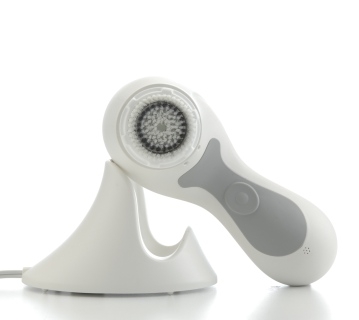
Photo taken the same day. Note the smoothing of texture and fine lines with the use of different filters.
Commonly used in the cosmetics industry, before and after images illustrate a compelling marketing story:
“After using product X-Y-Z for xx amount of time, this patient went from looking like this… to looking like THIS!”
Or, “After xx many treatments with this remarkable device, this patient saw THESE incredible results!”
The untrained eye of the consumer may find this type of photography very impressive … but do you really get what you see?
I have spent almost two years taking before and after photos for various studies being conducted, and it has been a real wake-up call for me to see how easy it is to skew end-result pictures. It is important for you to try to examine before and after images with a discerning eye, and identify tricks of manipulation that are used in the skincare industry to help make results look better than they actually are.
Photographing the Eye Area
Why is the eye area the most common before and after images we see? One reason is because it is extremely easy to manipulate the appearance of the eye area. A simple change of humidity in the room, or application of plain glycerin to the skin will create a more visually smooth skin texture.
Different Filters/Shadows/Flash
As you peruse before and after photographs, take note of shadows in the images – do the befores have more shading under the neck or eye area than the afters?
One of the easiest ways to create a “visual change” in before and after photography is the use of different camera filters or flash settings. It is especially easy to change the way a person looks simply by adjusting the flash setting. For example, one setting will accentuate fine lines, wrinkles and pore size, while using a different setting with flat lighting will “magically smooth” those features. Other settings will make pigmentation less visible.
Facial Expression and Positioning
Smiling or frowning in the before picture will definitely enhance an after image taken with no expression on the face.
As well, facial features can change if the positioning in each photo changes even slightly, and the distance from client to camera lens should always be the same.
Use of Makeup/other enhancements
Changes to jewelry, hair color or style, or injections such as Botox and/or fillers can all make an after image appear more impressive.
Length of Time from Before to After
As you are flipping through impressive looking pages of before and after images, note the length of time indicated from the first before photo to the after photo. Does the length of time switch around from weeks to months or years? For example, are the photos going from an 8-week span to an 8-month span, then back to a 16-week span? It is important that the length of time remains somewhat consistent or that you are able to note differences from one set of pictures to another.
The important take-home lesson from today’s blog is this: when you visit a skin professional for a product or service based on amazing before and after photographs, it is important that the provider communicates realistic expectations. Remember, realistic goals and a teamwork effort between you and your skin care expert will give you the results you desire.

